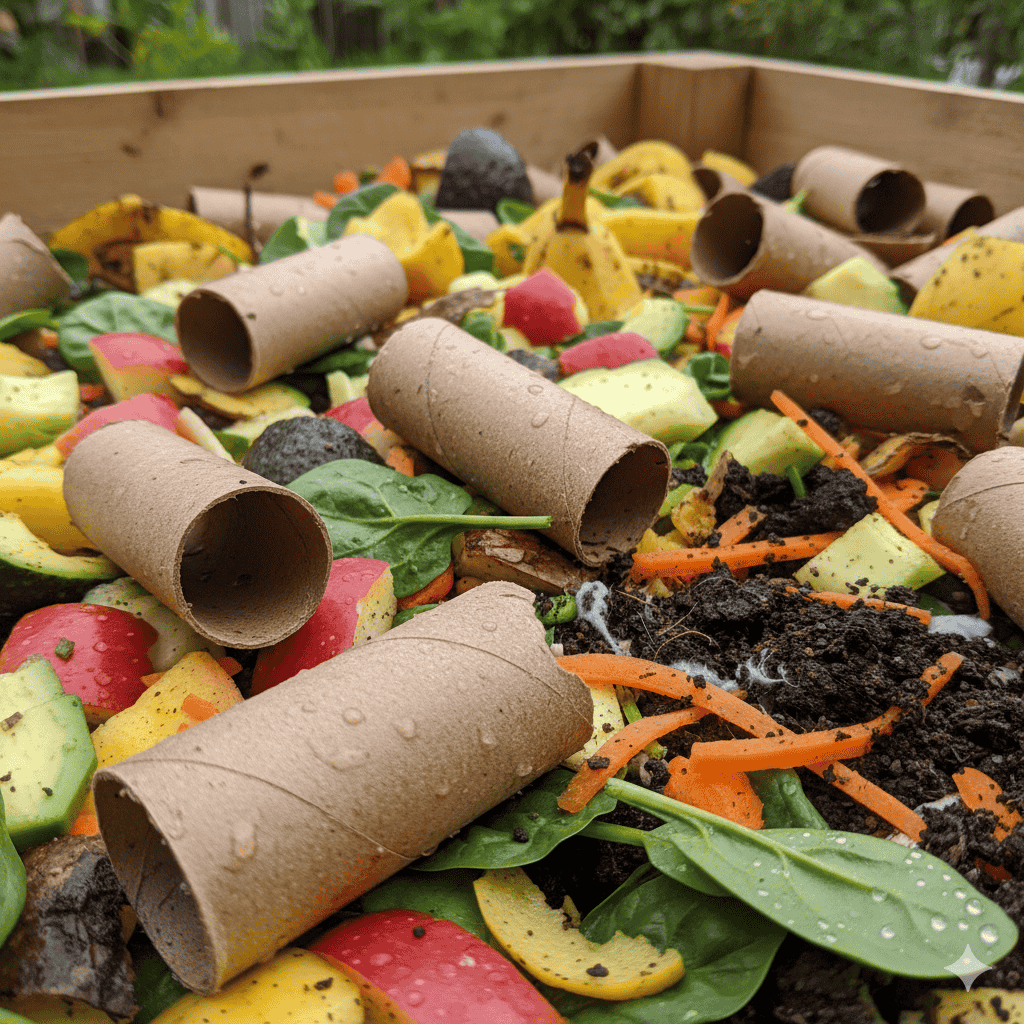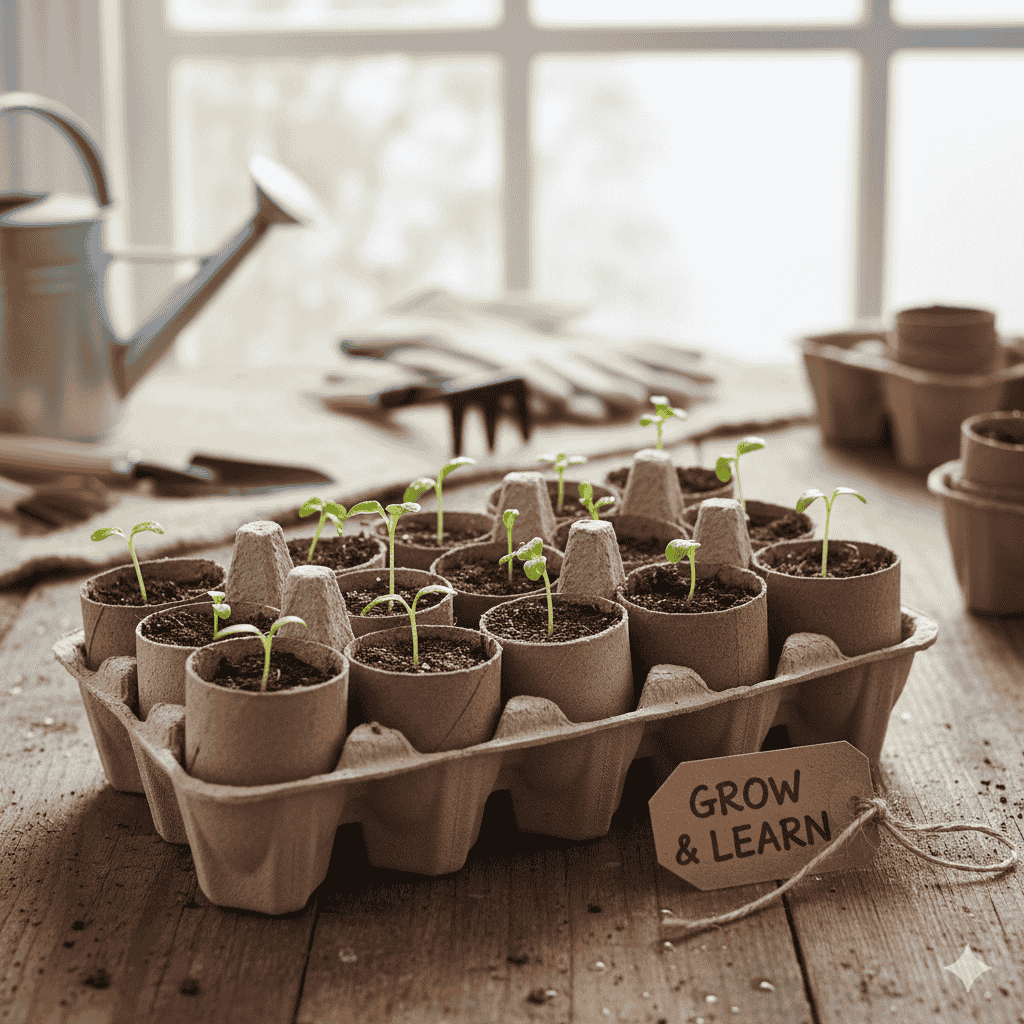When most people have finished a roll of toilet paper, the cardboard tube that is left inside is thrown away or put in the recycling bin without considering it twice. But what if those boring brown cylinders could be changed into a potent instrument for a cleaner earth, lush plants, and a more eco-friendly lifestyle? Gardeners worldwide are learning that toilet paper rolls are not just waste; if used correctly, they are a great source of “garden gold.”
Here is an article that shows us how to utilize cardboard tubes for composting, the benefits of cardboard tubes for the garden, and some hands-on uses to help you with the enrichment of the soil. You’ll be amazed at the new way of looking at your garbage/recycling bin.
Why Gardeners Call Toilet Paper Rolls “Brown Gold”
Composting is usually described as a juxtaposition of “greens” (nitrogen-rich substances like fruit peels, grass clippings, and coffee grounds) and “browns” (carbon-rich things like dried leaves, straw, or cardboard). Neither one alone would be sufficient to keep the compost pile alive and active.
Toilet paper rolls are considered “browns” since cardboard is the major carbon contributor. By adding shredded tubes to your compost bin, you are not just getting rid of the waste—you are providing your compost with the necessary fuel to consume the greens fast. A lack of browns in compost heaps results in them being wet, smelly, and slow. With the proper mixture, the blend heats up as it should, the microbes grow vigorously, and the decomposition accelerates.
However, that is not everything. The toilet paper rolls are also a source of additional benefits aside from the standard carbon supply.
Moisture Control and Aeration: A Hidden Advantage
If you have ever had a compost pile that has become too wet, then you must have been frustrated with it. The microbes that do the tough job of decomposition are drowned in water. Cardboard tubes can be compared with small sponges—they absorb more water if the heap is too wet and give it slowly when it is dry.
Such a method of moisture regulation is still the best one for the environment of compost. Besides, as cardboard is a fibrous material, it does not get compressed easily. The torn pieces become the air pockets in the heap, which allows air to flow and keeps away the bad smells that often happen in a poorly ventilated compost.
Earthworms Love Cardboard (and That’s Good News for You)
It is a fact that worms would be those players in composting that everyone would want to have on their team. It has been verified that they are one of the most excellent soil engineers, as they not only break the organic material but also make the soil rich with worm castings, and at the same time, they improve soil texture through tunneling. And perfectly, aren’t worms a fan of cardboard?
If it happens that you add the toilet paper rolls either in your compost or directly into the garden soil, worms are going to get in, cut through the cardboard with their mouths, and change it into worm castings—a nutrient-rich fertilizer that plants love. Besides, worm activity is the main aeration factor in your compost heap and garden, which get the oxygen they need.
In a nutshell, by recycling your cardboard tubes directly into the soil, you are basically handing over the job to the garden workers who work for you, free of charge.
How to Prepare Toilet Paper Rolls for Composting

Not all cardboard breaks down at the same speed. A whole toilet paper tube will eventually decompose, but it may take a while. To make the process faster and easier, try these simple prep tips:
- Shred or Cut Them Up
Use scissors or tear the rolls by hand into small strips. Smaller pieces break down more quickly and integrate into compost better. - Soak Before Adding
Dunk the pieces in water for a few minutes before tossing them into your compost bin. The softened cardboard will decompose faster. - Layer with Greens
Mix strips of cardboard with moist kitchen scraps, grass clippings, or coffee grounds. This prevents clumping and balances the carbon-to-nitrogen ratio. - Avoid Glossy or Colored Tubes
Only use plain, uncoated cardboard rolls. Tubes with heavy ink, glitter, or wax coatings may contain chemicals you don’t want in your soil.
Creative Ways to Use Toilet Paper Rolls in the Garden

Toilet paper rolls aren’t just useful in compost bins. Gardeners have found creative ways to repurpose them directly in the garden. Here are some tried-and-true methods:
1. Seed Starters
Cut rolls into small sections, stand them upright in a tray, fill them with potting soil, and plant your seeds inside. These biodegradable seed pots can be planted directly into the ground without disturbing the delicate roots.
2. Root Barriers for Young Plants
When planting seedlings, bury a cardboard tube around the base. This protects tender roots from cutworms and other soil pests while helping retain moisture around the plant.
3. Mulch Rings
Slice open a tube, flatten it, and place it around the base of your plants. Cover with mulch. The cardboard acts as an extra weed barrier while slowly breaking down into the soil.
4. Sheet Mulching
Layer flattened tubes along with leaves, grass, and other yard waste to create a weed-suppressing blanket. Over time, this sheet mulch decomposes and enriches your soil with organic matter.
Environmental Benefits: Small Tubes, Big Impact
Using toilet paper rolls in the garden might seem like a tiny gesture, but multiply it across millions of households and the impact becomes significant. Here’s why this simple trick is worth adopting:
- Reduces Waste: Instead of sending tubes to landfills or even recycling facilities (which require energy and water), you’re repurposing them directly at home.
- Cuts Down on Fertilizer Use: Healthier soil means less dependence on synthetic fertilizers that can pollute waterways.
- Supports a Circular Lifestyle: It’s an easy step toward sustainability, where waste materials are reused in a closed loop rather than discarded.
Common Mistakes to Avoid
Like any gardening hack, using toilet paper rolls comes with a few dos and don’ts:
- Don’t use glossy or colored cardboard: Stick to plain brown rolls.
- Don’t overload your compost: Too much cardboard can throw off the carbon-to-nitrogen balance.
- Don’t just toss in whole rolls: Tear or cut them into smaller pieces for faster breakdown.
- Don’t rely on them alone: Rolls are helpful, but you still need a variety of materials for healthy compost.
Beyond Compost: Other Household Cardboard Uses
Though toilet paper rolls are the main attraction of this magic, cardboard in other forms should not be ignored. Paper towel tubes, cereal boxes (if not glossy-coated), and plain cardboard packaging can be broken into pieces and composted. Heavily printed or wax-coated cardboard should be totally avoided, as such materials do not break down well and may release harmful substances into the earth.
From Trash to Garden Treasure.
Items that were once considered trash can still be used to create gardening tools. One can use toilet paper rolls in the garden and compost to basically grow a zero-waste lifestyle. In doing so, one is not only reducing the amount of waste but also growing healthier soil, giving earthworms a better chance, and supporting a sustainable lifestyle.
Therefore, the next time you decide to get a new roll, do not be in a hurry to put the empty tube in the recycling bin. It will be a great help for your plants to get that simple cardboard cylinder turned into pure garden gold.







